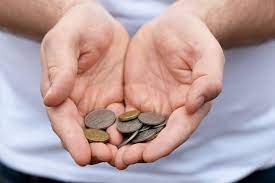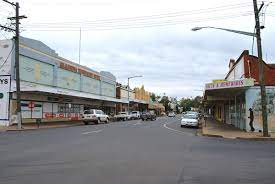Poverty in Western Plains revealed in shock new report
Luke Williams
28 April 2023, 9:20 PM
 The wealth of our region is not reflected in all household incomes.
The wealth of our region is not reflected in all household incomes.Most Western Plains towns have above NSW average rates of poverty a new report shows.
Research by the University of Canberra's National Centre for Social and Economic Modelling (NATSEM), commissioned by the NSW Council of Social Services (NCOSS), has analysed 2021 Census data to examine the extent of poverty throughout the state.
It found that one in eight people or 13% of NSW live in poverty.
In the Western Plains, Gilgandra and Walgett/Lightning Ridge were found to have the highest poverty rates in the region at 18%.
The number of people living in poverty in Gilgandra rose from 14% in 2016.
However, Walgett/Lightning Ridge saw a decline in poverty rates.

Image: Monash University
17% or 400 people in Bourke and Brewarrina are living in poverty - an improvement on 2016 levels.
The poverty level is 15% in Coonabarabran and Coonamble. Coonamble saw a big decrease from 22% in 2016 while 14% (down from 16% in 2016) of Narromine residents sit below the poverty line.
The calculation used by NCOSS is half of median household income, which can range from $489 per week for a single person to $1,027 per week for a couple with two children.
NCOSS said the data shows the state’s housing crisis is “pushing more people into poverty.”
“People experiencing poverty in NSW are most likely to live in the private rental market, where more than 413,000 tenants (20 per cent of all NSW renters) are now living below the poverty line, as inflation and cost of living pressures soar.
“With home ownership becoming more out of reach, the research notes that older people reaching retirement age but still in the private rental market are contributing to this increase” NCOSS said in a statement.
The research found the number of mortgage holders in extreme financial stress had risen by 80 per cent since the last Census in 2016, and most of those affected were outside Sydney.
"We've absolutely seen in regional areas that people paying off a mortgage have seen a significant spike when it comes to living in poverty," NCOSS chief executive Joanna Quilty said.

Gilgandra's main street. Image: Wikipedia
NCOSS has called on the NSW Government to bolster social housing, increase rental supply, cap rents and lift income support payments.
Young people also contribute disproportionately to poverty numbers in rural and regional areas.
According to NCOSS, the poverty rate for young people (15-24 years) is 25% higher in rural and regional NSW compared to Greater Sydney. It increased from 2016 to be the highest poverty rate of all age groups in rural and regional NSW.
The report said “A major driver was a substantial increase in poverty rates for people aged 15-24 and not in the labour force (from 25% to 39%), particularly due to increased housing costs. Other factors at play might be higher unemployment rates for men in their 20s in regional and rural NSW”.
